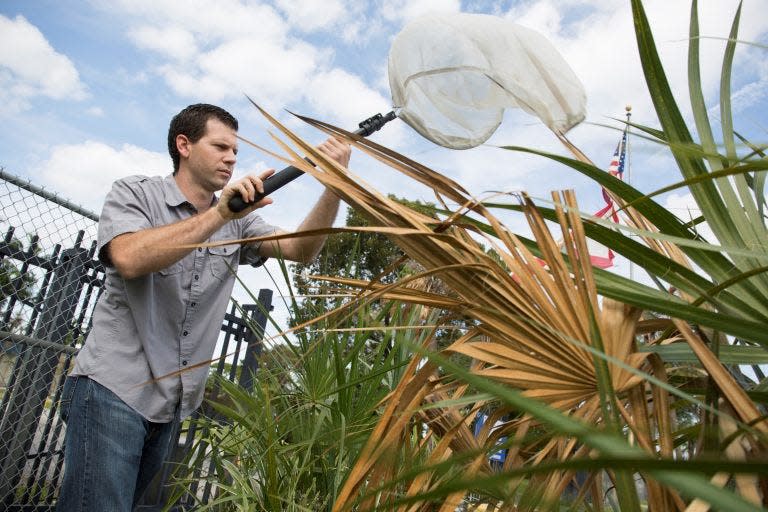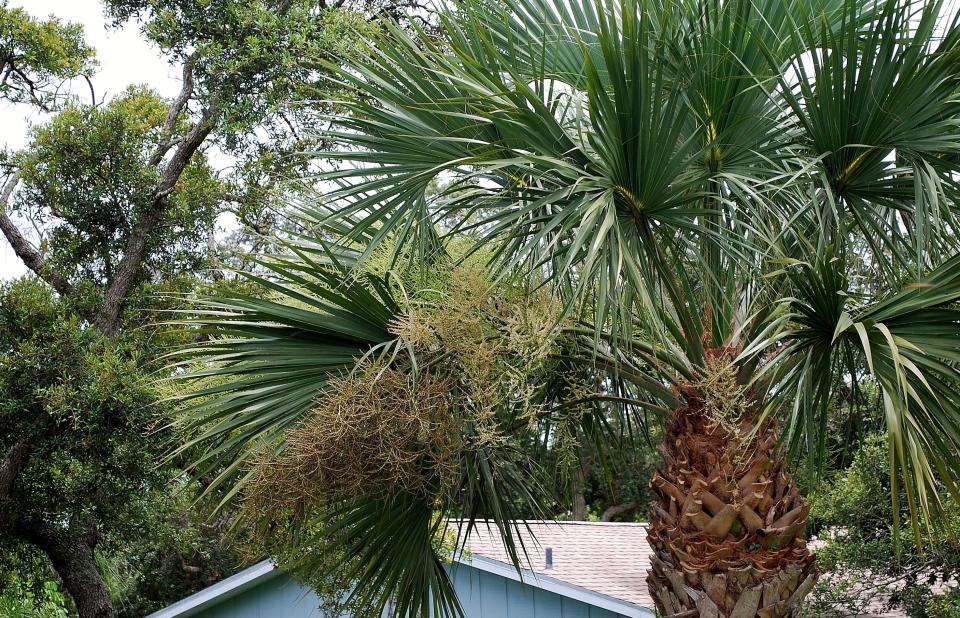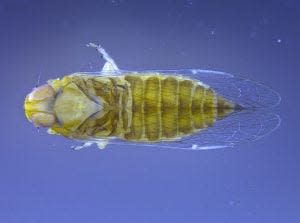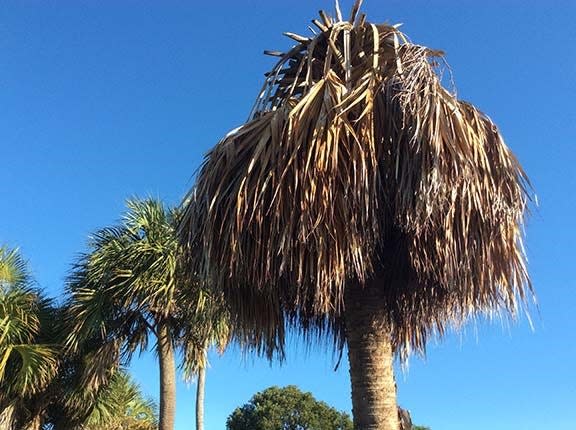Lethal bronzing disease is a death sentence to Florida palm trees but scientists may have a solution
It’s been nearly two decades since the discovery that a snot-colored planthopper was killing more than 20 species of Florida palm trees by spreading a terminal bacterial infection called lethal bronzing.
But a landmark study by University of Florida scientists has deciphered a warning signal — a scented SOS of sorts — radiated by sick trees that triggers a protective response in nearby palms. They are now duplicating the morose perfume in the laboratory in the hope that distributing it among healthy trees will push them to rally a defense without others having to fall ill first.
Because once a tree is infected, there is no cure. Tricking trees into supercharging their immune systems could save untold fortunes for growers and landscapers who, for now, can only watch pricey palms wither and die when stricken with the disease.

“The infected palms are releasing an alarm, it may inherently be to warn the nearby plants, it may be a last ditch effort to save itself, but the other plants are hearing it and reacting,” said UF entomologist Brian Bahder, whose team at the Institute of Food and Agricultural Sciences in Fort Lauderdale conducted the study. “It’s kind of exciting, and we want to harness it to benefit the plant.”
Lethal bronzing was first recognized in Central Florida around 2006. It has since spread to more than half of Florida's 67 counties, according to UF. Bahder said it is especially noticeable in Palm Beach County in trees planted along Florida’s Turnpike and Interstate 95 where the telltale signs of coppery-colored branches are evident.
Expensive Canary Island date palms in Florida a favorite target for lethal bronzing
The disease, which is spread by the Haplaxius crudus insect, attacks several species of palm but often prefers Florida's state tree, the native cabbage palm, also known as the sabal palm. Another favorite is the regal Canary Island date palm which is often used in affluent landscaping where it is trimmed at the top to resemble a pineapple.
What are the symptoms of lethal bronzing?
If a tree gets infected, the bacteria break down its vascular system, eating the flesh under the bark and spreading through tissues that the tree uses to move water and nutrients around. Leaves turn a reddish-bronze color beginning at the bottom and moving up until the spear leaf or "heart" of the palm dies.

Grass Armageddon: Lethal viral necrosis is killing Florida's St. Augustine grass and there's no fix
“Not all diseases have lethal in their name and this one does for a good reason,” said John Roberts, a commercial horticulture specialist focusing on ornamental plants at UF's IFAS in Palm Beach County. “It’s definitely a landscape issue because if a palm dies, they have to replace it and nice palms can be expensive.”
At Smarty Plants Nursery in Lake Worth Beach, a 10-inch Canary Island date palm in a three-gallon pot costs $25, according to its website. A 6-foot palm in a 25-gallon pot costs $570.
Early research on lethal bronzing disease was a dead-end
Bahder’s research was published last year in MDPI’s peer-reviewed scientific journal Plants.
He said he was initially interested in studying whether the insect spreading the lethal bronzing was attracted to the scents, called green leaf volatiles, coming from already infected palms so that they could use those compounds as bait for the insects.
That turned out to be a dead end, the bugs weren’t attracted to the scent. Instead, what he found was that the infected palms were releasing a very high concentration of two different compounds, and that nearby trees were producing a defensive compound in response that contained antimicrobial elements. Trees farther away from an infected cluster did not produce the same defense compound.

They call her Rosie: How robot lawn mowers in one West Palm Beach community help fight climate change
The discovery marked the first documented case of the volatiles detected in palms infected by the bacteria that causes lethal bronzing.
"We don't think of plants as being intelligent, but they communicate through these chemicals," Roberts said. "A lot of times they can pick up on what other plants are dealing with."
Bahder said the compounds that can trigger a natural defensive response are inexpensive to create in a lab. The liquid could be injected into a tree, possibly curing it, placed in dispensers to evaporate, or sprayed into at-risk areas to stimulate the defensive response.
Bahder is looking for between $500,000 and $600,000 in funding to do more testing,

“Early detection is important to avoid a mountain of burned palms,” Bahder said. “If a plant gets infected, it’s a death sentence."
Call your county Extension office if you suspect a tree has lethal bronzing disease.
Kimberly Miller is a veteran journalist for The Palm Beach Post, part of the USA Today Network of Florida. She covers real estate and how growth affects South Florida's environment. Subscribe to The Dirt for a weekly real estate roundup. If you have news tips, please send them to kmiller@pbpost.com. Help support our local journalism, subscribe today.
This article originally appeared on Palm Beach Post: UF scientists hope to stop lethal bronzing disease in Florida palms

